Holi or “the festival of colours” is a spring festival which is celebrated across India mostly in the north with fun and fervour.
Let’s start with a brief description about the Holi Festival
It is celebrated for two days starting from the Purnima or Full Moon Day falling in the month of Phalgun according to the Hindu calendar. This full moon day is also known as Dol Purnima in parts of India. The first day is celebrated as Holika Dahan and the second day as Dol Yatra or Dhulandi or Holi.
Holika Dahan is celebrated in parts of India by burning effigies of Holika, the devil, symbolizing the victory of good over evil. This ritual commemorates how Lord Vishnu, in his Narasimha avatar saved the life of Prahlad, his ardent follower or bhakt from his father the cruel King Hiranya Kashyap and his sister Holika.
Different parts of India celebrates Holi in different ways by smearing colour powder on each other’s faces or by splashing colourful water on each other along with some mouth-watering snacks and sweets like gujiya, mathri, malpuas and other regional delicacies.
Places in India Famous for Traditional Holi Celebrations:
Barsana & Nandgaon, Uttar Pradesh:
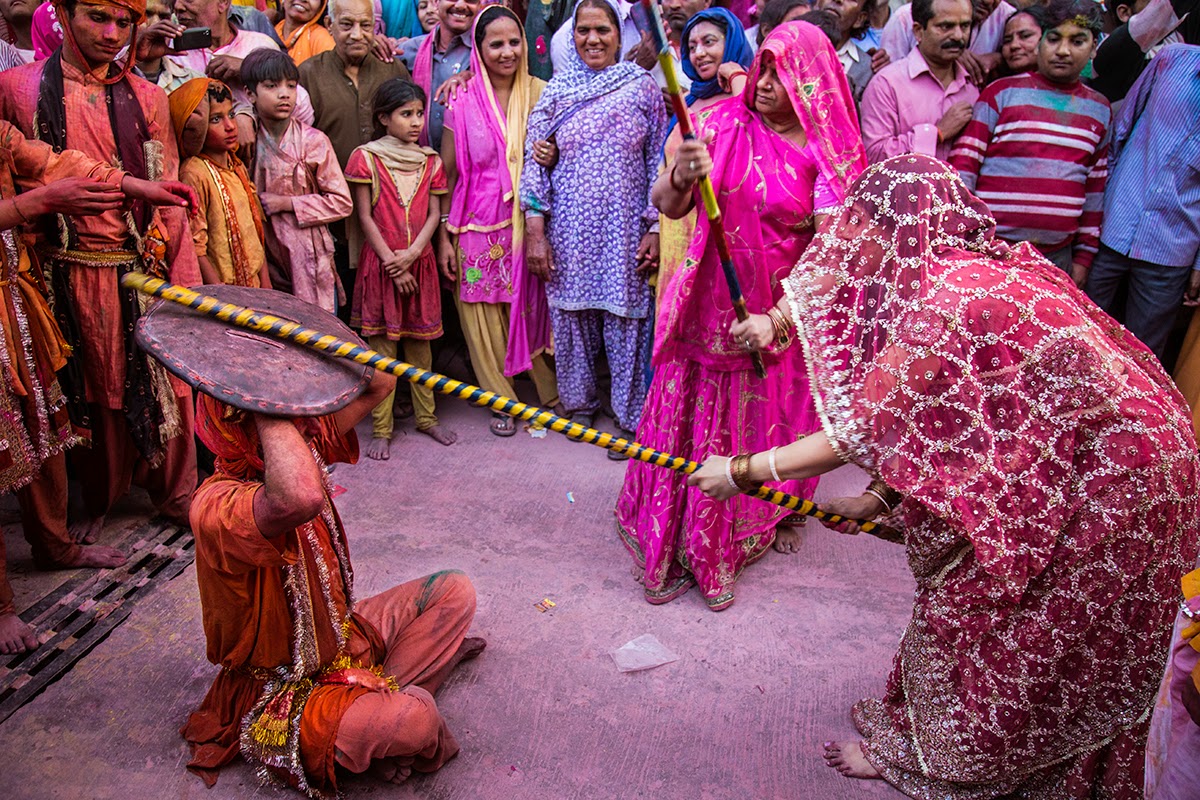
The small town of Barsana in Uttar Pradesh, located at a distance of about 42 km from Mathura is well known for its unique manner of celebrating Holi which is known as Lath Mar Holi. Barsana is the birth place of Radha, Lord Krishna’s beloved and every year a large number of visitors throng the place during Holi celebrations.
According to Hindu mythology Lord Krishna had visited his beloved Radha’s village on this day and had playfully teased her and her friends. Taking offence at this, the women of Barsana had chased him away.
Commemorating the same incident, the men from Nandgaon visits the town of Barsana every year, only to be greeted by sticks or lathis from the women there. The ladies hurl sticks at the men, who try to shield and protect themselves as much as they can. The unlucky ones are captured by the enthusiastic women who then, make the men wear female clothing and make them dance in public. The next day, it is the turn of the men of Barsana. They reciprocate by invading Nandgaon and drench the womenfolk of Nandgaon in colours. During the celebration the Holi songs of Braj mandal are sung in pure Braj Bhasha.
Mathura & Vrindavan, Uttar Pradesh:
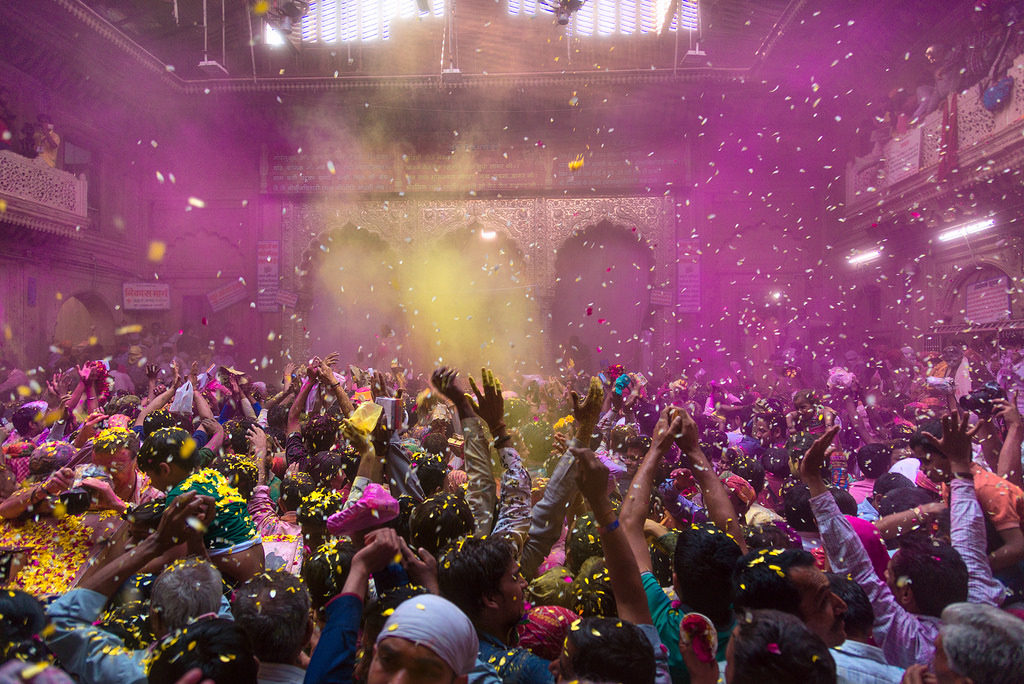
The traditional Holi is celebrated with much fun and enthusiasm every year in Mathura – the birth-place of Lord Krishna and Vrindavan – the place where he grew up in his childhood in present Uttar Pradesh. Holi celebrations get underway on Vasant Panchami or the fifth day of the month Magha, according to Hindu calendar which is approximately forty days before the main Holi, in the temple towns of Mathura and Vrindavan.
The Banke-Bihari Temple in Vrindavan is one of the famous place to enjoy the festivities as it hosts a week long Holi celebrations. In Vrindavan Holi is played with coloured water and gulal, a form of colour made by using organic substances like flowers and kesar. Apart from Banke Bihari Temple, every other major Lord Krishna Temple in Mathura and Vrindavan has some special celebrations during the whole week. The Gulal-Kund in Braj is also another exciting place to celebrate Vrindavan Holi.
Shantiniketan, West Bengal:

The famous Bengali poet and Nobel Laureate Kabi Guru Rabindranath Tagore started the celebration of Holi as Basanta Utsab or Spring Festival in Bolpur Shantiniketan in Birbhum district, West Bengal. Inspired by spring and the vibrant colours of Holi, Gurudeb (as he is fondly addressed in Bengal), the founder of the Vishva Bharati University, introduced the celebration as an annual event there. Students of the university on the day of Holi, dress up themselves in colours of yellow and put on a huge cultural program for visitors, including dances to Tagore’s songs. This is followed by the usual smearing of colours which is popularly known as abeer. Basanta Utsab has become a celebrated part of Bengali history and culture, and also attracts a huge number of foreign tourists every year.
Purulia, West Bengal:
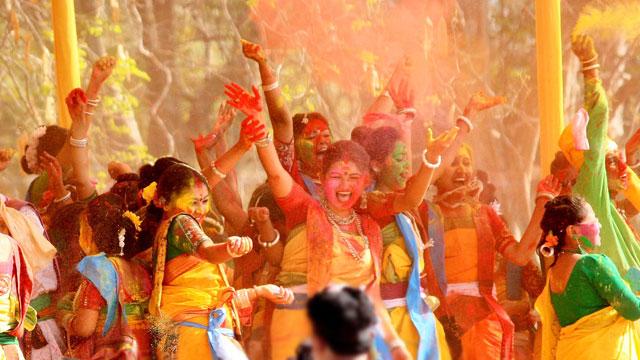
A three day Basanta Utsab folk festival is hosted in the villages in Purulia district of West Bengal by the villagers every year as a way of helping themselves to sustain life and it’s every day’s challenges. People get to sing and play Holi with the locals, as well as enjoy a wide variety of unique folk art which includes the incredible Chau dance, Darbari Jhumur, Natua dance, and songs of West Bengal’s wandering musicians popularly known as the Bauls.
Anandpur Sahib, Punjab:
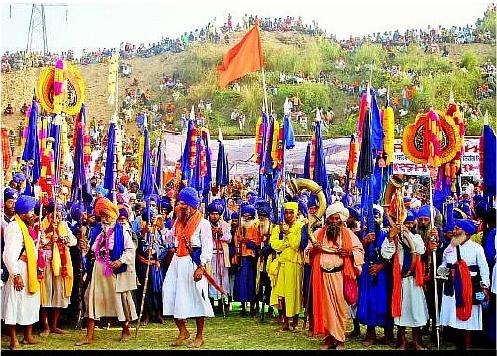
Udaipur, Rajasthan:

On the eve of Holi, people light bonfires to mark the occasion and ward of evil spirits in the ritual known as Holika Dahan. The special Holika Dahan ceremony is celebrated in a glorious way featuring a palace procession where the Mewar royals in their tradition manner host the lively festival celebrations. A magnificent palace procession from the royal residence to Manek Chowk at the City Palace is organised, where bejewelled horses and royal band are a part of the procession. Later the traditional sacred fire is lit and an effigy of Holika, the devil is burnt. The next day in Udaipur is a riot of colours and water splashes.
Jaipur, Rajasthan:

To mark the Holi celebration every year an elephant festival kicks off in the Pink city on Holi eve. Fun activities like elephant parades, elephant beauty contests, folk dances, and tug-of-war between elephants are organised during the festival of colours. Every year during Holi the city becomes the hub for tourists from around the globe, who come to India for this unique experience. However this event has not been held since 2012 due to pressure from animal rights activists.
So which of the above places are you planning to visit to make the experience of Holi all the more unique and enchanting?
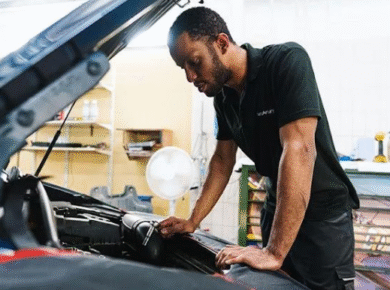

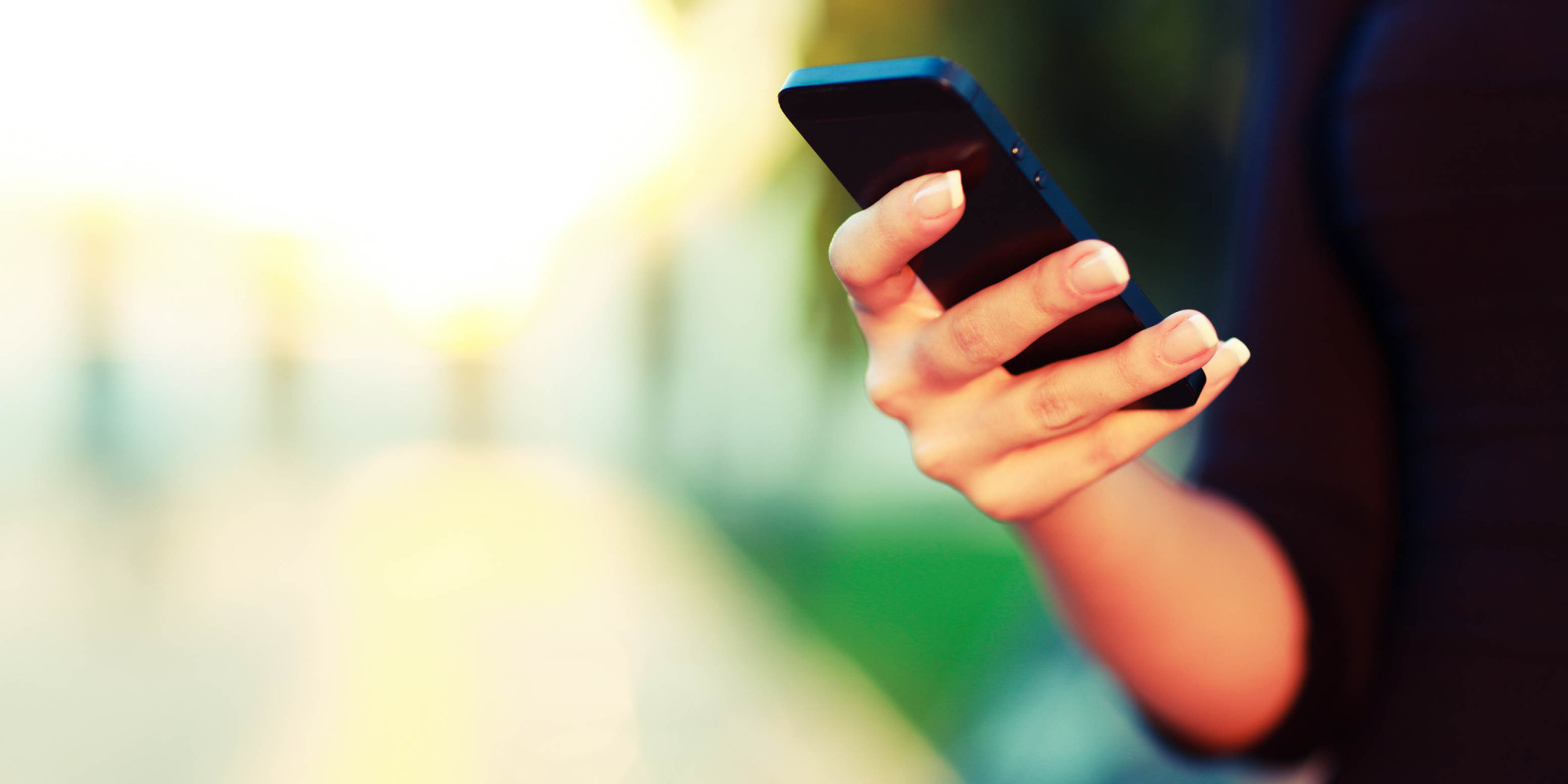
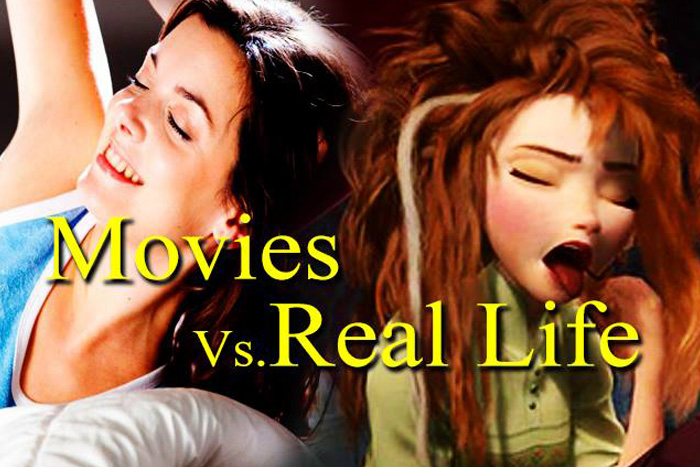
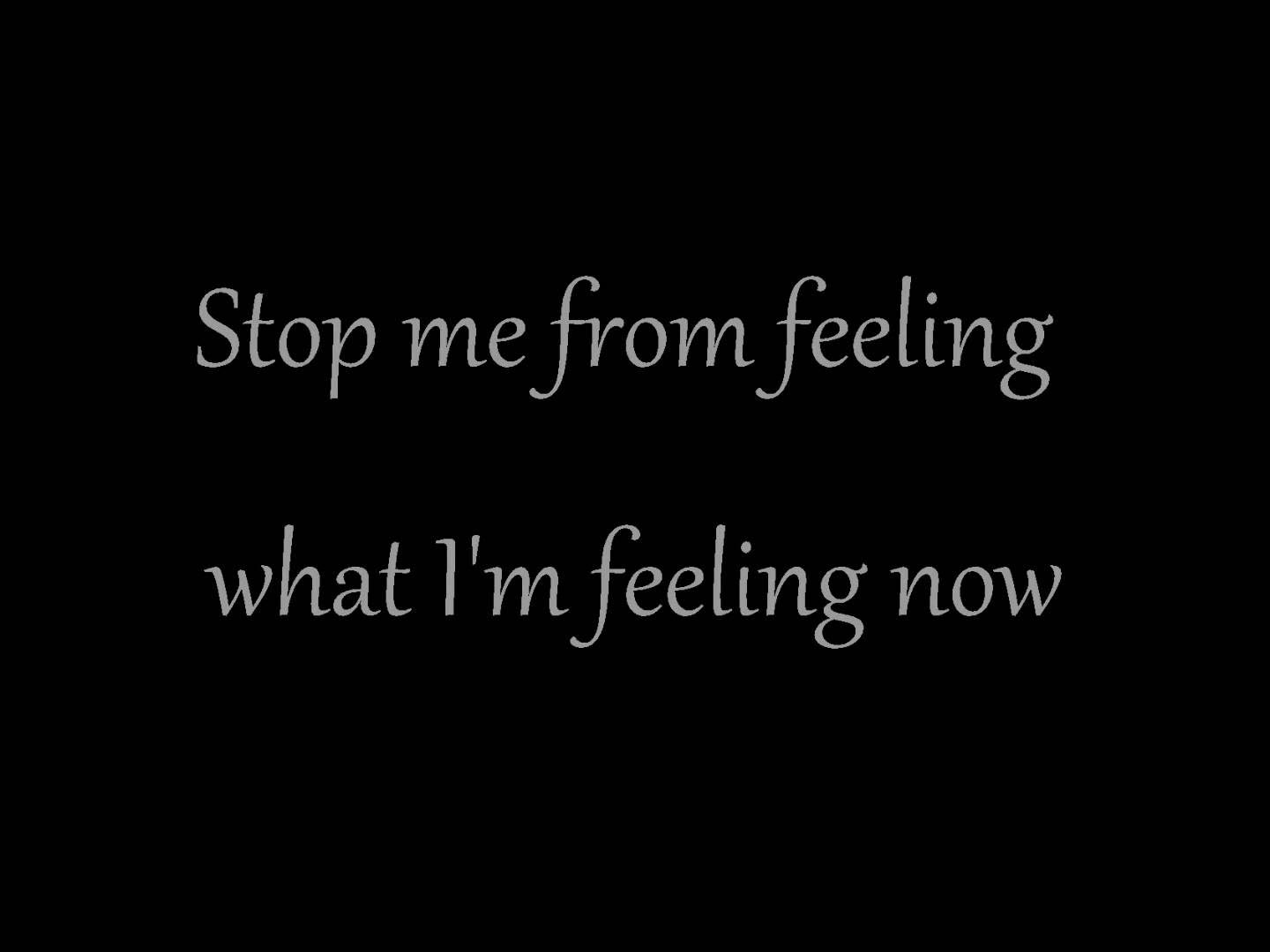

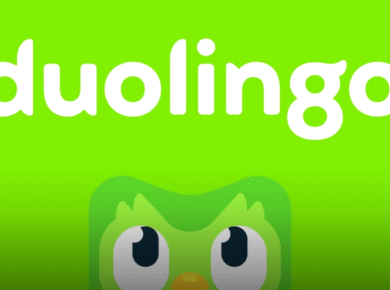

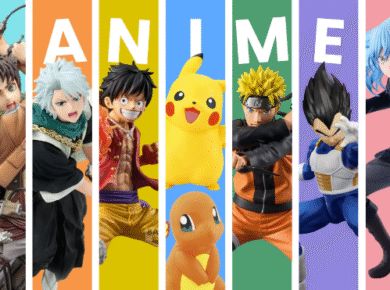
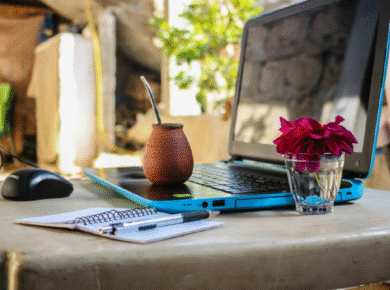
1 comment
Great compilation of different ways to celebrate Holi in India. Thank you